Reflections On The Anthropology Of Religion – Analysis
With the advent of the human sciences, traditional philosophical figures cracked and the markers of meaning shifted. The anthropological field replaced the metaphysical instance to define the new space of human reflection. Philosophical work developed in relation to the human person : value systems are built, cultural messages are developed, ethical and political solidarity is woven.
Religious anthropology teaches us that man is not man as homo religiosus, the one in whom religion and culture have the same matrix to spring forth from. Is it necessary to confuse the sacred with religion ? In other words, what is the field of religious anthropology on the one hand and, on the other, what is the nature of the sacred?
What is the anthropology of religion?
From its foundation in the 19th century to its current redeployment in contemporary societies and in the context of globalization, anthropology has always had a particular interest in religion, its origins, its forms and its variations.
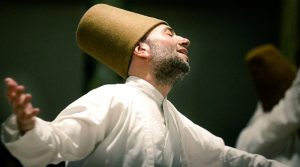
The anthropology of religions is that branch of social and cultural anthropology which has developed from the study of particular religions (magic, witchcraft, animism, totemism, shamanism…) and empirical objects (myths, rites, beliefs, representations, social organizations…), by mobilizing theories and employing methods that give it a singular identity in the constellation of religious sciences. This field of anthropological knowledge, which was once considered a “science of primitive religions”, is still relevant today to grasping religions, modern or not, in mutation and movement.
When it comes to restoring the anthropology of religions to its history and developments, two different versions can be written:
- Either it blends the contributions of philosophers, sociologists, historians or mythologists with those of ethnologists without distinction : this is the way Brian Morris (1987), for example, paints the historical portrait of the “anthropological studies of religion” from Hegel to Lévi-Strauss, including the sociologists Max Weber, Karl Marx and Emile Durkheim, and the psychologists Sigmund Freud and Carl Gustav Jung.
- Or, in a completely different perspective, the field of the anthropology of religions is more restrictive and is linked to a very particular academic tradition, that of the comparative study of non-Western societies and their belief systems. Between the inclusive and integrative version and the restrictive and exclusive version, it is all a matter of perspective. And it is the latter that is retained here, for reasons that are easily explained : there is no anthropology of religions that is not first and foremost an anthropology (i.e. a comparative ethnography).
Specifying the identity of the field of study selected here presupposes a prior clarification of what is meant by “anthropology”. The term is currently enjoying considerable popularity : there are a number of fields in which “anthropology” is encountered, which appears in this usage as a generic category in which it is possible to include oneself without further ado, as long as the discourse evokes Man (in general), culture, and claims a semblance of universality.
Anthropology and the concept of belief
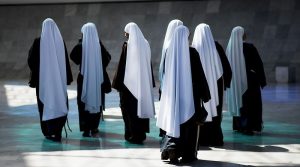
Anthropology has not only produced theories about particular religions: certain properties initially attributed to religion in general have been elevated to the status of particular objects of study, which have generated autonomous fields of knowledge. Beliefs, symbols, rites, myths and powers are, in one sense, “sacred” or “religious” and in this sense they are related to the anthropology of religions, even if, on the other hand, they go beyond the sphere of religion in the strict sense.
Anthropology confers two statuses on the concept of belief : in the plural, it is embodied in objects that can be ethnographed by virtue of their materiality ; in the singular, it appears as a mental phenomenon, long considered to be a matter of psychology. Based on the study of its presumed or observed forms in the societies studied by ethnologists, the first category (“beliefs”) is of the order of descriptive language (“the x believe…”) and reveals the singularity of the objects of belief in a given group (“but they believe something else”). It is precisely on this last point that the debate on the comparative scope of the concept of belief as a mental state, particular to religion or not, has been based. Beyond belief, it is another question, that of “faith” (of non-Western populations) that arises.
Religious anthropology differs from ethnology, history and sociology of religions in that it tries to understand, beyond the chaos of religious facts, the man who creates and manipulates a whole symbolism, that of the “supernatural” or the “sacred”. Naturally, the first task of religious anthropology is to define what distinguishes symbols of the sacred from other kinds of symbolism. There is no other way out, if one does not want to fall into the traps of ethnocentrism, than to start each time from the indigenous definitions and their classifications of things in a binary system: sacred and profane.
Dimensions of the anthropology of religion
Religious anthropology was born in the second half of the nineteenth century ; unfortunately, at the beginning it posed a series of false problems : those of the origin, evolution or essence of religion ; hence the discredit from which it fell and from which it is only now recovering, through a change of perspective. Today, it appears either as a chapter of social anthropology (locating religious institutions in social structures and searching for the latent functions that these institutions fulfil in society as a whole) or – which is the viewpoint supported here – as an independent science.
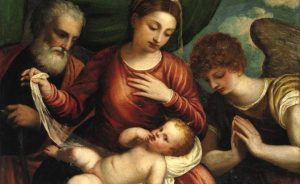
In this case, religion is studied in two dimensions: synchronic, as a coherent set or system of thoughts, affects and gestures; and diachronic, as a set that changes and modifies itself. In the first case, the anthropologist proposes models ; in the other, he looks for, if not laws, at least general processes, such as those of rebalancing the religious in relation to the rest of social life – whenever the gap is too great – or those of religious transfer from one field to another entirely different.
Religion and public life
In the approach of most anthropologists and more broadly of researchers in the humanities, religion is not an autonomous anthropological object. It is considered to be expressive of the social (Durkheim), the political (Balandier), the psychic processes (Freud, Devereux), and the bad tricks that language is likely to play on us (Wittgenstein [1982] or Bataille, who considered that Christianity was basically nothing more than a crystallisation of language [1999]). In other words, for these various authors, religion is always second to what is not religion. It can only be understood as a metaphor: to believe in a deity is to believe in something else and to speak in religious terms is, as Durkheim said, « to say things differently than they are » (1960).
The first anthropologists hated religions, at least as historical institutions – Evans Pritchard says so explicitly (1972, 1974) – while questioning religion as one of the strongest affirmations of the social bond. It was, with kinship, through the study of the religious phenomenon that anthropology began to constitute itself as a scientific discipline, and this happened in Australia, or rather in relation to the Australian aborigines.
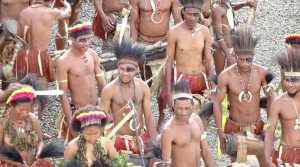
All the world’s religions are today affected by the widespread movement of wealth, information and people. It is indeed extremely rare for a religion to be limited to a single country. Religions follow migration routes and spread through social networks. Most migrants retain their beliefs and ritual practices in migration, disseminate them in the host country and encourage conversions. Irrespective of the movement of people, digital networks make available to everyone the information needed to join a religious movement. But religions are also partly the vector of these movements, since migration sometimes has a religious origin, whether it is international expansion linked to proselytism, transnational religious solidarity networks or religious conflicts. Beliefs, rituals and transnational communities are therefore both effects and causes of globalization.
Analysis of ritual practices
The anthropology of religion means :
a) studying the history of the relationships between the concepts of culture, religion and ideology in anthropology;
b) becoming familiar with the different concepts of the anthropology of religions (myths, rituals, cosmology, polytheism, shamanism, etc.);
c) questioning the diversity of the religious fact; and
d) reflecting on the ideological and religious dimensions of contemporary societies.
Anthropology of religions focuses on anthropological analysis of ritual practices that establish a relationship with imaginary forces and intentional agents (the occult/the divine), represented in bodies of myths and beliefs and deals with the Durkheimian and Weberian approaches. It, also, covers the diversity of theoretical currents in chronological order (functionalist, structuralist, Marxist, interpretative, cognitiveist, postcolonial anthropology, etc.), and attempts to deal with most of the religious phenomena studied in priority by anthropology (shamanism, cults of possession, prophetism, witchcraft, divine royalties, cult of ancestors and spirits of nature, life cycle rituals, initiations, polytheisms and monotheisms).

The anthropology of religion introduces anthropology and ethnography and presents some of the major currents in the anthropology of religion (functionalism, structuralism, etc.) and some of the classical or contemporary authors of the discipline (Evans-Pritchard, Lévi-Strauss, Griaule, Geertz, Augé, etc.). ) through a questioning of the origin and prehistory of religion, the cosmology of traditional societies, their representations of life and death, the relationship between religion, social and political organization, as well as certain contemporary debates concerning both Western and non-Western cultural areas (Africa, South America, Oceania, etc.).
The anthropology of the religious pursues two objectives:
- To deepen certain themes on the one hand ; and
- To explore the intersections of the religious and other fields of the discipline – politics, mobilities, inter-ethnics, the body and health, etc. – on the other hand.
The central axis of the anthropology of religion is the theme of the religious in the public space, and it, also, covers the theories articulating the religious in modernity to the category of public space and public sphere, the importance of visual, auditory and performative practices in the production and/or maintenance of a public religiosity will be questioned. In addition, there is a focus on the modes of appropriation of public space by different religions under different political regimes. The arenas where the interactions between politics and religion in modernity are observed, by comparing the public sphere and secularism as theoretical tools.
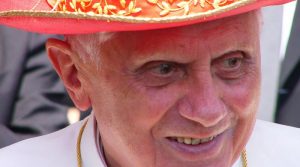
In a second stage, the interest of religious anthropology focuses on the notion of religious plurality/mixity and on the notion of interreligious dialogue, identifying the fields that anthropologists have favoured to study them. In particular, it looks at pilgrimage as an expression of a religious person who gives himself or herself to be seen, participating in a form of public space, or even invading it, and the forms of tolerance and intolerance that can be deployed there. Using examples, it examines the ways in which religious mixing and cohabitation are organized and experienced in this specific arena of the religious.
Between religious anthropology, which makes explicit the view of a particular religion on man, his origins, the purpose of his life ; and the anthropology of religions, there is a considerable gap in terms of both object and method in anthropology. In fact, the anthropology of religions is man’s view of God and of religion as an object of research. It is a human and not a divine perception of religion. It focuses on the study of rites, their functions and symbolism ; on the opposition of the sacred to the profane, on sacrifices and their crucial role in religious life. It also speaks of the human thirst for eternal life and the rejection of death, which is at the basis of all anthropological reflection.
The place of religion in sociology
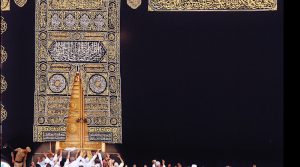
Today we don’t talk much about religion among ourselves, much less than before, but the spiritual, the sacred is always present even if we don’t talk much about it. What is the place of religion in sociology? We have gone from the sociology of religion to the sociology of religions and then to the sociology of religious facts. Sociologists are more interested in the experience of the sacred. At the beginning, there was a form of ethnocentrism because we were only interested in one religion (Christianity) but later on we became interested in the other religions present. Sociologists preferred to focus on religious facts rather than on religion itself.
Every religion follows an esoteric trend. What’s interesting is religion as seen socially. The only stable thing in religions is religious experience. The essence of religion is not knowledge or action but a personal way of being in the world. In the elementary forms of religious life, Durkheim wanted to understand how certain values were transmitted and whether religion can be replaced by school, for example. He described how the sharing between the Profane and the Sacred is carried out. Men need to find themselves among themselves and for this they will carry out rituals : ceremonies whose aim is to separate the profane from the sacred, to be in a state and to create a ritual effervescence (to arouse emotions). In this way they form a community which is a Church. Church is community of faithful linked in the collective effervescence through rituals that have allowed the real separation between the profane and the sacred. The profane/sacred character depends on the temporality and the people present. A place is not always profane or sacred, sometimes it is both at the same time. Nothing is sacred if one does not make it sacred oneself. The sacred/profane sharing is moving, no precise limit.
For psychologists, religion is a strategy of the individual
For psychologists, religion is a strategy of the individual in the face of unsatisfied needs and the objective limitations of the individual. It is a box of answers to frustrations, fears etc. They turn religion into something utilitarian, a theory of sublimated needs. People who practice a religion are less anxious than non-believers, it’s a real fact. There is a calming effect of the religious : the less you practice, the more anxious you are.

In the evolution of religion, there is a loss of religion among the faithful, a desacralization, particularly because of the sciences that are developing. There is a belief that technical/scientific progress will solve everything. The sacred is no longer focused in the Church. Mircea Eliade Young considered that the unconscious is structured in a religious way, it is inherent in our personality. Man is already inhabited religiously (e.g. : surpassing his limits). There is the creation of a pantheon, a representation of people, nature, etc.
Practicing people express their religion outside of them, for others it is inside. These are archetypes. The difficulty of the spiritual is the reproducibility of the events of religious experience. Experience that is linked to the Thanatos, everything that leads to death and Eros, everything that leads to life : creating a work of art, eating, raising a child, and sexual relations. One has a need to love and to be loved, to become one again as with the mother and the foetus, a desire to regress at this stage.
Historical and anthropological framework of religion
Sociologists have long been interested in religion: Auguste Comte, Durkheim, Max Weber, Bourdieu, etc. Religion offers a framework for life and belief, allowing people to situate themselves. The nobility, supported by the clergy, will distance themselves from religion.
The sociologists wonder how a modern society based on individualistic values can remain united ? How does the social order remain in a society, whose legitimacy is the extension of individualistic values, without there being a major crisis? For a society to exist, there must be cohesion.
Sociologists, who are secular advocates, have analyzed the sacred and the main forms of religious organization by applying themselves to understanding the social and economic order and the symbols and institutions. They have drawn inspiration from anthropologists of religions who have done a great deal of work.
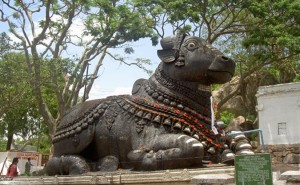
Giving an exact definition of religion is difficult, yet anthropologists manage to distinguish the religious when they are in the field. They do not have a single definition. The anthropology of religions is a difficult field to define because religion is vast. They start from a definition in extenso, therefore from a definition based on work considered anthropological. Fragmentary vision depending on the authors and their biases. They wonder about which are the first, most primitive religions? Their appearances, their developments, becoming the religion of a developed people? Monotheism is the most developed religion in the world, at the ultimate stage of the development of civilization. Evolutionary vision. For a priest, Schmidt, since one God has revealed Himself to all people, then monotheism is legitimate.
Origins of religion
At the end of the 19th century, 2 theses appeared on the origin of religion :
- Müller, Naturism : For this anthropologist, in the Veda (Hindu religious texts) the names of deities are common names for elements of nature. There is therefore a belief in natural deities. This belief comes from language, from the personification of natural phenomena (the sun rises). For a primitive man, the natural phenomena/forces are entities to which it is necessary to devote a worship to be in harmony : divinization of the natural phenomena. It is the first religion that appeared. The notion of soul appeared late. As man cannot resign himself to a definitive death, he divinized the soul by granting the ancestors immortality and he worships them (cult of the ancestors).
- Tyler, Animism: For him, the notion of soul comes first. He starts from the dream and the dreamlike experience. This experience plays a decisive role in the formation of religious representations. During a dream, there is a duplication of the subject and the world of real experience. Formation of a dreamlike double when one sleeps and of a universe, without consideration of time and space (ex : flying, meeting an absent person, premonitory dream, etc.) The dreamlike double is at the origin of the idea of the soul, of the dreamlike universe. We created the beyond through our dreams. The soul is like a vital principle. Since death is comparable to a long slumber, the dead can manifest themselves to the living in dreams. We have imagined a notion of a spiritual soul which leaves a dead body but which can interfere with the living : appearance of funeral rites and ancestor worship. These concepts lead to the belief that everything in nature has a soul : animism. If the soul is at the heart of every living being and moves in nature, it is because everything is alive and has a soul (fire has a soul, plant has a soul, etc.) The cult of death extends to nature to unite the mysterious powers that condition the destiny of humanity. Animism was man’s first religion, polytheism succeeded it.
These are speculative theories based on incomplete, erroneous data. Muller and Tyler’s starting point has not been empirically proven. Only in Indo-European languages and mythologies are the names/powers of deities associated with natural phenomena. As for the soul, it is attested to some societies and not others. In everyday life, there are all kinds of beliefs. Most of the conflicts arise from beliefs and not from real defeats.
People, the world, institutions, are irrational, because they are based on beliefs (belief in Christian charity, etc.) Muller and Tyler’s theories have common points : they start from the evolutionary presupposition. People who practice this presupposition and have religious beliefs are like children trying to understand the world in a clumsy way. The social dimension of religion in these theories is absent : intelligence is the ability to adapt to the environment, not the accumulation of knowledge.
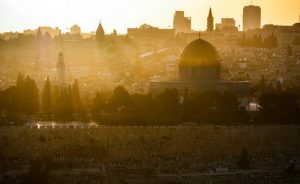
The modern man is as intelligent as the primary man, and children give anthropomorphic status to their toys. This seems absurd in Durkheim, because even an animal can distinguish an inert object from a living being. Just a child knows it’s a game when he talks to a toy. For Durkheim, Religion is neither a dream, systematized or lived, nor a huge metaphor without objective value like the naturist theory. It cannot be a misinterpretation of the real world because its purpose is not the control of the forces of nature. Religion is an existential dimension, an ethic of life, with no immediate but deferred effect (access to the beyond), it does not solve everyday problems but regulates the everyday (like a clock).
Magic according to Mauss is performative, with immediate effects. Religious power is like magic. Religions structured life, society, in the beginning. The first act to enter the sacred is to renounce what one believes and one’s ego. Since the fall of the Berlin Wall, the countries of the East have become even more religiously observant.
Anthropology and the sacred
Individuals, as soon as they create a social order, live it as a collective experience under the sign of the extraordinary. E.g. : Moses gives his people a new law in an exceptional situation. The social order is created when people isolate in society a place of power, the sacred, in order to legitimize the rules and collective values that are imposed on them to allow social cohesion. The sacred is the collective super ego of a society, a place of representation and production of the symbolic imagination.
Durkheim:
Durkheim is the precursor of symbolism. Even today, secular places are sacred : you don’t just walk into a General Meeting, a General Assembly, a court of law, etc.
For Durkheim, there is an institutionalized form of the sacred. It is the social conscience that performs an integrating function. The religious is posterior to the sacred, to the effervescence of the collective, and responds to the need to administer the sacred that will legitimize the social order. Religion is therefore the rule. Religion, from the Latin Relicare, which means to link, to hold together a society from a belief and from meta-social value. Rites are important in the sense that they update collective consciousness, myths, social order, while maintaining an original consciousness.

In many religions there are dietary and sexual prescriptions that individuals recognize as common values and common rules of conduct. Certain foods are considered impure. People submit to these prohibitions not because they reflect on the historical basis of the rule, but because they justify it by tradition or a sacred text verse. The dialectic of the pure and the impure, that is to say, an exemplary aspect of the way a religion functions and in the way. Ritual is an organized set of gestures which gradually bring us more and more into the realm of the sacred. The ritual always refers to a myth. We separate the sacred from the profane by a set of ordered, meaningful gestures.
Durkheim has relied on the work of totemic societies. One of the first elements of clan building is the identification of the clan with a totem pole. You belong to the clan if you have the same totem pole. The totem pole refers to a God. Durkheim thinks that in (classical) totemic tribal societies, the totem is an organized form of representation of the sacred in which the society recognizes itself as an entity. It is evidence of a link with the sacred and between clan members, i.e. a system of signs and symbols that serves society to remain united and to establish its own identity. All religions have developed sacrificial rites, particularly initiation rites (Van Gennep, Rites of passage). Each society exists through these rites.
A child is recognised as soon as it is registered in the civil register, as soon as it has a name, even if it has not yet been born. The totem delimits boundaries between what is sacred and what is profane, and between those who can manipulate sacred things and those who must remain outside. In 1905, the state separated from the church and becomes secular in France (laicité), which is far more sacred than any religion because it allows the practice of any religion. Durkheim sees no other source than religion as a substitute for education. He sees no other sources than religion and education to replace, to allow, industrialization.
Weber:
For Weber, there is an affinity between two typical ideals: Calvinism and capitalism. There are ethical elements that allow the rapprochement, especially in the mentality of modern capitalism : continuous accumulation and the existence of a rational discipline of work and enterprise that shows a constant relationship between means and ends, i.e., savings, investment, re-investment and accumulation of goods. This is a rational economic action that can be observed in some parts of Europe where there is a particular form of religion : Calvinism. There is said to be a relationship between the Calvinist religion and capitalism. Weber points out the typical features of the rational ethics of industry and compares them with the Calvinist features. There is a doctrine of predestination in capitalism but also that of intramundane asceticism. They are essential for understanding the development of capitalism.
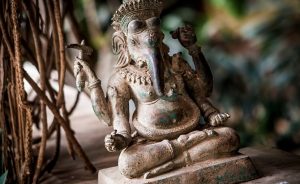
Weber speaks of predestination : the fact that man saves himself by his faith alone, even if he does not know whether God will save him. Since he cannot be in the divine decisions, he has the only possibility of living his profession, his work, on earth as a vocation: the beruf (we find this idea among the Japanese). The desire to do well what God asks of us, and the success that comes from it, is the only measure, the only proof that allows us to know if we have done our work well. To live one’s work as a commitment that God asks us to make in the secular world means to submit one’s opinion to an ethical discipline, therefore to a rational method: an asceticism (a methodical exercise) intramundane (in the world). It is a risk-taking for the entrepreneur, like the religious, because commitment and asceticism require sacrifices. It is a question of imposing discipline on one’s desires in order to accumulate the necessary energy and to obtain results, i.e. there is the rationality of an ethical action which serves an economic action. The relationship Weber points out is that of capitalism and Calvinism, action and ethics, in some parts of the world. In other countries, the form of development of capitalism is having difficulty in being ethical.
For Weber, religion would be a factor of social change. Like Marx, he seeks to explain social change. How, at a certain point in time, do profound changes in the social order occur in given societies ? For Marx, the socio-economic conflict between social classes is a determining factor. For Weber, if society is changing, it is because the factors of economic, social and political crisis can be interpreted by sociological or political innovators who are able to read the signs of the times and become vectors for the needs for change that people express. The figure of the ideal innovator is the prophet, the charismatic leader, the central figure of change (Gandhi, Mao Tse-tung, etc.) who plays the role of ethical, sociological and political innovator.

The formation of political leadership, through the charisma and the figure of the prophet. The prophet is the one who says something new in relation to the religious of his time. He announces a new way of speaking with God and of creating new relationships between God and men (e.g. Moses, who lived through terrible trials with his people, …who submitted to an order of revival with new laws from the hand of God; Jesus; Mohammed; Buddha; Martin Luther King; Nelson Mandela; Gandhi; etc.) The prophet makes a criticism, an observation, from now on to propose a new way of life and therefore a new form of society. These are leaders who perceive the state of society better than others and who propose an alternative model to existing societies and change is only possible if the society that emerges is authentic and has something new. They have a charisma. Charism is a gift possessed by an individual around whom there is always the manifestation of proof of exceptional, personal power, which is manifested (is seen) and which allows a group of followers or disciples to claim this prophet by forming a group. The prophet is invested with a divine mission. When he dies, there is a problem : that of the survival of the charism after his death and the legacy is at stake.
We arrive at the routinization of the charism. Institutions, state organizations or associations are recovering the doctrine in the same direction, but the spirit, the charism is no longer there. They manage without the spirit. How can the institution of the Church be enriched when the message of Christ is to abandon all possession ? We have ethical prophecy (the word of the prophet), and we have exemplary prophecy, that is to say, the one who first experiences a new life of perfection, rebirth and salvation and who proposes himself as a model to be followed (Buddha, Jesus, Mohammed, etc.). Weber does not ask himself what the function of religion is, but rather how religion will bring about social change.
To conclude
The anthropology of religion is a science concerned with religious rites, practices, myths, doctrines and texts, it studies various fields such as the notion of belief, taboo, religious characters, prohibitions and the relationship between magic and religion.
The anthropology of religion aims essentially to study the history of the relationships between the concepts of culture, religion and ideology ; to become familiar with the different concepts of the anthropology of religions (myths, rituals, cosmology, polytheism, shamanism, etc.) ; to question the diversity of the religious fact and to reflect on the ideological and religious dimensions of contemporary societies.
The anthropology of religion differs from ethnology, history and sociology of religions in that it tries to understand, beyond the chaos of religious facts, the man who creates and manipulates a whole symbolism, that of the “supernatural” or the “sacred”.

Naturally, its first task is to define what distinguishes symbols of the sacred from other kinds of symbolism. There is no other way out, if one does not want to fall into the traps of ethnocentrism, than to start each time from the indigenous definitions and their classifications of things in a binary system: sacred and profane.
In order to apprehend religious facts, the scientific challenge is to cross a plurality of theories and methodologies and borrow from various disciplinary fields, statistical approaches and analysis based on visual documents, networks, discourses or even comparative approaches.
In this context, theoretical and methodological choices for research are crucial and reflexively questioning research practices is part of a state of research renewed mainly since the mid-2000s.
Indeed, if studies existed previously on the theories of religions (and in particular on the theory of secularisation) and on the theories and legacies of the pioneers (Durkheim, Weber, Eliade…), methodological approaches have since been systematically questioned.
Several works attempt to synthesize practices in this field, first in the English-speaking academic field since 2005, the collection The Routledge Companion has focused on The Study of Religion (new edition expanded in 2011), offering studies on methods, theories and themes deployed in religious studies (Hinnels, 2010). In 2012, Robert A. Orsi presented a synthesis, rather oriented towards theoretical analysis and based on case studies, The Cambridge Companion to Religious Studies (Orsi, 2012).
The methodological practices are deepened by a dedicated book published in 2011, edited by Steven Engler and Michael Stausberg: The Routledge Handbook of Research Methods in the Study of Religion (Engler & Stausberg, 2011).
You can follow Professor Mohamed CHTATOU on Twitter : @Ayurinu
Bibliographie:
Adams, Charles Joseph. 2017. “Classification of Religions”. Encyclopædia Britannica.
Albera, Dionigi, 2011, “La mixité religieuse dans les pèlerinages. Esquisse d’une réflexion comparative”, Archives de sciences sociales des religions, 155, pp. 109-129
Aubin-Boltanski, Emma, 2007, Pèlerinages et nationalisme en Palestine. Prophètes, héros et ancêtres, Paris, Editions de l’EHESS.
Bauberot, Jean, 2009, “Pour une sociologie interculturelle et historique de la laïcité”, Archives des Sciences Sociales des Religions, 146, pp. 183-199.
Bowie, Fiona. 1999. The Anthropology of Religion : An Introduction. Oxford : Blackwell.
Cassirer, Ernst. 2006 [1944]. Lukay, Maureen (ed.). An Essay On Man : An Introduction to a Philosophy of Human Culture. Hamburg: Meiner.
Cotrupi, Caterina Nella. 2000. Northrop Frye and the Poetics of Process. Toronto : University of Toronto Press.
Durkheim, Émile (1912). The Elementary Forms of the Religious Life.
Durkheim, Emile. 1960 [1912]. Les formes élémentaires de la vie religieuse. Paris : Quadrige/PUF (chapitre 1)
Duijzings, Ger, 2000, Religion and the politics of identity in Kosovo, London, Hurst & Co
Eickelman, Dale F. & Salvatore, Armando, 2006, “Public Islam and the Common Good”, Etnográfica, X (1), pp. 97-105.
Eller, J. D. 2007. Introducing Anthropology of Religion. New York : Routledge.
Favret-Saada, Jeanne. 2009. Désorceler. Paris : Editions de l’Olivier (Penser / rêver).
Favret-Saada, Jeanne, 2010, Jeux d’ombres sur la scène de l’ONU. Droits humains et laïcité, Paris, Editions de l’Olivier
Feuerbach, Ludwig. 1841. The Essence of Christianity.
Geertz, Clifford.1966. “Religion as a Cultural System”. In Banton, Michael (ed.). Anthropological Approaches to the Study of Religion. London : Tavistock (published 2006). pp. 1–46.
Glazier, Stephen.1999. Anthropology of Religion : A Handbook. Westport, CT : Praeger.
Guthrie, Stewart Elliott. 2000. “Projection”. In Braun, Willi; McCutcheon, Russell T. (eds.). Guide to the Study of Religion. London : Cassell.
India and the Balkans”, Current Anthropology, 43 (2), pp. 205-231.
Harvey, Van A. 1995. Feuerbach and the Interpretation of Religion. Cambridge, England : Cambridge University Press (published 1997).
——— 1996. “Projection : A Metaphor in Search of a Theory ?”. In Philips, D. Z. (ed.). Can Religion Be Explained Away ? Claremont Studies in the Philosophy of Religion. London : Palgrave Macmillan. pp. 66–82.
Hefner, Robert W., 1998, “Multiple Modernities : Christianity, Islam, and Hinduism in a Globalizing Age”, Annual Review of Anthropology, 27, pp. 83-104.
Hirschkind, Charles, 2006, The Ethical Soundscape. Cassette Sermons and Islamic Counterpublics, New York, Columbia University Press
Houseman, Michael. 2012. Le rouge est le noir. Essais sur le rituel. Toulouse : Presses Universitaires du Mirail.
Kanafani-Zahar, Aïda, 2000, “Pluralisme relationnel entre chrétiens et musulmans au Liban : l’émergence d’un espace de ‘laïcité relative'”, Archives de Sciences Sociales des Religions, 109, pp. 119-147.
Lamine, Anne-Sophie, 2004, La cohabitation des dieux. Pluralité religieuse et laïcité, Paris, PUF.
Lamine, Anne-Sophie (dir.), 2013, Quand le religieux fait conflit. Désaccords, négociations ou arrangements, Rennes, Presses Universitaires de Rennes.
Levi-Strauss, Claude. 1958. « L’efficacité symbolique », in Anthropologie Structurale. Paris : Plon (Agora).
Luhrmann, Tanya M. 2012. When God talks back. Understanding the American Evangelical relationship with God. New York : Vintage Books.
Mackey, James Patrick. 2000. The Critique of Theological Reason. Cambridge University Press.
Mahmood, Saba, 2015, Religious Difference in a Secular Age : A Minority Report, Princeton, Princeton University Press.
Manickam, T. M. 1977. Dharma According to Manu and Moses. Bangalore : Dharmaram Publications.
Marett, Robert Ranulph. 1932. Faith, Hope and, Charity in Primitive Religion. New York : Macmillan Company.
Nelson, John K. 1990. A Field Statement on the Anthropology of Religion. Berkeley, California: University of California, Berkeley.
Pandian, Jacob.1997. “The Sacred Integration of the Cultural Self : An Anthropological Approach to the Study of Religion”. In Glazier, Stephen D. (ed.). Anthropology of Religion : A Handbook. Westport, Connecticut : Praeger.
Walbridge, John.1998. “Explaining Away the Greek Gods in Islam”. Journal of the History of Ideas. 59 (3 ): 389–403.
Weber, Max.2002. Baehr, Peter R.; Wells, Gordon C. (eds.). The Protestant Ethic and the “Spirit” of Capitalism and Other Writings. Translated by Baehr, Peter R.; Wells, Gordon C. New York: Penguin Books.

